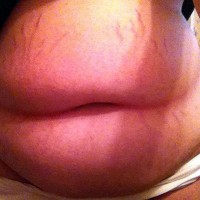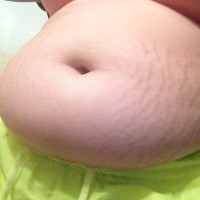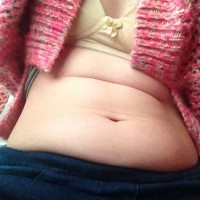Visceral fat removal surgery
Visceral Fat Removed During Tummy Tuck?
No visceral fat is within the abdominal cavity and can only be lost from diet and exercise. We only remove the fat and skin on the outside of the abdominal cavity and above the abdominal muscles. (Richard J. Brown, MD, Scottsdale Plastic Surgeon)
Visceral fat is not removed with liposuction. It can be decreased with diet and exercise.
An abdominoplasty does not remove intraperitoneal fat.
Fat within the abdominal cavity or visceral fat is not removed during and abdominoplasty. Fat between the abdominal wall and the skin is. (Vincent N. Zubowicz, MD, Atlanta Plastic Surgeon)
Visceral fat removal with tummy tuck
A tummy tuck procedure does not to remove visceral fat, which is located inside your abdomen around your internal organs. (Erik Miles, MD, FACS, Charlotte Plastic Surgeon)
Is visceral fat removed during a tummy tuck?
It’s an excellent question that you’re asking and the short answer is that a tummy tuck does not remove visceral fat. Visceral fat however, does play a role during a tummy tuck surgery.Visceral fat is inside your abdomen. It lies behind your abdominal wall and envelops your internal organs.
After the abdominal wall is tightened during an abdominoplasty procedure, it’s the visceral fat and organs that push against the repair. The less visceral fat that is present at the time of your procedure, the tighter the surgeon can make the abdominal wall during the “muscle repair”. If a patient gains a significant amount of weight after an abdominoplasty procedure, the internal visceral fat can push against the repair and restretch the abdominal wall.
The effect of the visceral fat at the time of your procedure is part of the reason that plastic surgeons commonly request that patients are at a stable weight prior to performing an abdominoplasty procedure. They don’t want the amount of visceral fat to fluctuate. If you plan to lose weight after a tummy tuck procedure, then it’s better to lose the weight beforehand, so that the belly can be made even flatter and tighter during the procedure.
If you gain weight after the procedure, then there is concern that you could stretch out the muscle repair. Visceral fat can be reduced by using diet and exercise, in the same way that you would lose fat anywhere else in the body. It’s best to hit your goal weight, and then move forward with a tummy tuck surgery. (Austin Hayes, MD, Portland Plastic Surgeon) As you have already heard, visceral fat (intra-abdominal fat) is not removed with a tummy tuck. This is important to understand as the increased abdominal girth is some people can be mostly due to this visceral fat and they might not benefit from an abdominoplasty. (Mark Anton, MD, FACS, Denver Plastic Surgeon) Cosmetic procedures such as a tummy tuck or liposuction do not address visceral fat. If you do have a lot of this deeper type of fat, the only way to get rid of it is through weight loss (either through diet and exercise or gastric bypass or a combination of these). Losing this weight and getting down to a healthier BMI will give you the best aesthetic outcome after your Tummy Tuck procedure. (Paul M. Steinwald, MD, Seattle Plastic Surgeon)
Visceral fat and abdominoplasty results
Visceral fat is fat that is adjacent to your ‘internal organs’ – it is not removed by a tummy tuck surgery. Patients with excessive visceral fat cannot achieve an ideal abdominal profile after tummy tuck surgery. (Scott C. Sattler, MD, FACS, )
Visceral fat is present as a protection to your abdominal organs and is below the abdominal muscles. In a standard tummy tuck, this fat is not removed. An idea of how much visceral fat you have can be determined by an examination by your plastic surgeon to gauge how effective a tummy tuck will be. Visceral fat CAN be removed laparoscopically, but this is not recommended by most plastic surgeons. The risks involved in a standard tummy tuck would be compounded too much in my opinion if this is added to the procedure. It has been done however.The best way to rid yourself of visceral fat below the muscle is diet and exercise. (Shayne Webb, MD, Nashville Plastic Surgeon)








